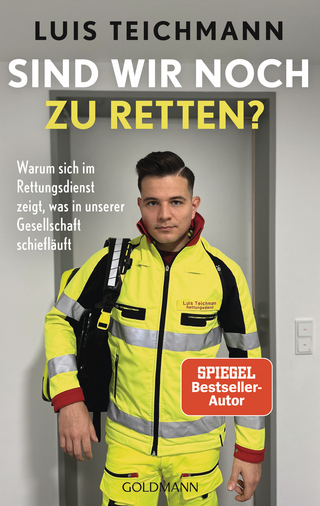
A Mother's Reckoning
Crown (Verlag)
978-1-101-90702-3 (ISBN)
- Titel ist leider vergriffen;
keine Neuauflage - Artikel merken
For the last sixteen years, Sue Klebold, Dylan's mother, has lived with the indescribable grief and shame of that day. How could her child, the promising young man she had loved and raised, be responsible for such horror? And how, as his mother, had she not known something was wrong? Were there subtle signs she had missed? What, if anything, could she have done differently?
These are questions that Klebold has grappled with every day since the Columbine tragedy. In A Mother's Reckoning, she chronicles with unflinching honesty her journey as a mother trying to come to terms with the incomprehensible. In the hope that the insights and understanding she has gained may help other families recognize when a child is in distress, she tells her story in full, drawing upon her personal journals, the videos and writings that Dylan left behind, and on countless interviews with mental health experts.
Filled with hard-won wisdom and compassion, A Mother's Reckoning is a powerful and haunting book that sheds light on one of the most pressing issues of our time. And with fresh wounds from the recent Newtown and Charleston shootings, never has the need for understanding been more urgent.
Author profits from the book will be donated to research and to charitable foundations focusing on mental health issues
Sue Klebold is the mother of Dylan Klebold, one of the two shooters at Columbine High School in 1999 who killed 13 people before ending their own lives, a tragedy that saddened and galvanized the nation. She has spent the last 15 years excavating every detail of her family life, and trying to understand the crucial intersection between mental health problems and violence. Instead of becoming paralyzed by her grief and remorse, she has become a passionate and effective agent working tirelessly to advance mental health awareness and intervention.
"...[U]nimaginably detailed, raw, minute-by-minute, illuminating, and just plain gripping. It's also the most extraordinary testament--to honesty, love, pain, doubt, and resilience.... This book is nothing less than a public service. I beseech you to read it."
- Bruce Feiller
"As people read Sue's memoir, what they will find is that her book is honest, and her pain genuine. Her story may be uncomfortable to read, but it will raise awareness about brain health and the importance of early identification and intervention to maintain it. If people listen to her - to all that she has experienced, and to how this has changed her - they will be quicker to respond to depression in young people, to the suicidal thinking that can accompany it, and to the rage that can build almost unnoticed in young people when the people who truly and completely love and care for them are distracted by other challenges in life."
-Paul Gionfriddo, President and CEO of Mental Health America
"Required reading for all parents of adolescents...soul-piercingly honest, written with bravery and intelligence... A book of nobility and importance." -The Times
"Reading this book as a critic is hard; reading it as a parent is devastating....I imagine snippets of my own young children in Dylan Klebold, shades of my parenting in Sue and Tom. I suspect that many families will find their own parallels....This book's insights are painful and necessary and its contradictions inevitable."
-Carlos Lozada, The Washington Post
"[Sue Klebold's book] reads as if she had written it under oath, while trying to answer, honestly and completely, an urgent question: What could a parent have done to prevent this tragedy?...
She earns our pity, our empathy and, often, our admiration; and yet the book's ultimate purpose is to serve as a cautionary tale, not an exoneration."
-The New York Times Book Review
"[T]he parenting book everyone should read."
-Parents.com
"I believe Sue Klebold. So will you."
-LA Times
"At times her story is so chilling you want to turn away, but Klebold's compassion and honesty -and realization that parents and institutions must work to discover kids' hidden suffering-will keep you riveted."
-People.com
"This book which can be tough to read in places is an important one. It helps us arrive at a new understanding of how Columbine happened and, in the process, may help avert other tragedies." Rated: A.
-Entertainment Weekly
Chapter 1
"There's Been a Shooting at Columbine High School"
April 20, 1999, 12:05 p.m.
I was in my office in downtown Denver, getting ready to leave for a meeting about college scholarships for students with disabilities, when I noticed the red message light on my desk phone flashing.
I checked, on the off chance my meeting had been canceled, but the message was from my husband, Tom, his voice tight, ragged, urgent.
"Susan-this is an emergency! Call me back immediately!"
He didn't say anything more. He didn't have to: I knew just from the sound of his voice that something had happened to one of our boys.
It felt as if it took hours for my shaking fingers to dial our home phone number. Panic crashed over me like a wave; my heart pounded in my ears. Our youngest son, Dylan, was at school; his older brother, Byron, was at work. Had there been an accident?
Tom picked up and immediately yelled: "Listen to the television!" But I couldn't make out any distinct words. It terrified me that whatever had happened was big enough to be on TV. My fear, seconds earlier, of a car wreck suddenly seemed tame. Were we at war? Was the country under attack?
"What's happening?" I screamed into the receiver. There was only static and indecipherable television noise on the other end. Tom came back on the line, finally, but my ordinarily steadfast husband sounded like a madman. The scrambled words pouring out of him in staccato bursts made no sense: "gunman . . . shooter . . . school."
I struggled to understand what Tom was telling me: Nate, Dylan's best friend, had called Tom's home office minutes before to ask, "Is Dylan home?" A call like that in the middle of the school day would have been alarming enough, but the reason for Nate's call was every parent's worst nightmare come to life: gunmen were shooting at people at Columbine High School, where Dylan was a senior.
There was more: Nate had said the shooters had been wearing black trench coats, like the one we'd bought for Dylan.
"I don't want to alarm you," he'd said to Tom. "But I know all the kids who wear black coats, and the only ones I can't find are Dylan and Eric. They weren't in bowling this morning, either."
Tom's voice was hoarse with fear as he told me he'd hung up with Nate and ripped the house apart looking for Dylan's trench coat, irrationally convinced that if he could find it, Dylan was fine. But the coat was gone, and Tom was frantic.
"I'm coming home," I said, panic numbing my spine. We hung up without saying good-bye.
Helplessly fighting for composure, I asked a coworker to cancel my meeting. Leaving the office, I found my hands shaking so uncontrollably that I had to steady my right hand with my left in order to press the button for my floor in the elevator. My fellow passengers were cheerfully chatting with one another on the way out to lunch. I explained my strange behavior by saying, "There's been a shooting at Columbine High School. I have to go home and make sure my son's okay." A colleague offered to drive me home. Unable to speak further, I shook my head.
As I got into the car, my mind raced. It didn't occur to me to turn on the radio; I was barely keeping the car safely on the road as it was. My one constant thought, as I drove the twenty-six miles to our home: Dylan is in danger.
Paroxysms of fear clutched at my chest as I sifted again and again through the same jagged fragments of information. The coat could be anywhere, I told myself: in Dylan's locker or in his car. Surely a teenager's missing coat didn't mean anything. Yet my sturdy, dependable husband had sounded close to hysterical; I'd never heard him like that before.
The drive felt like an eternity, like I was traveling in slow motion, although my mind spun at lightning speed and my heart pounded in my ears. I kept trying to put the pieces of the puzzle togethe
| Erscheinungsdatum | 29.02.2016 |
|---|---|
| Zusatzinfo | w. photos |
| Sprache | englisch |
| Maße | 156 x 236 mm |
| Gewicht | 399 g |
| Themenwelt | Literatur ► Biografien / Erfahrungsberichte |
| Literatur ► Briefe / Tagebücher | |
| Literatur ► Romane / Erzählungen | |
| Sachbuch/Ratgeber ► Geschichte / Politik ► Politik / Gesellschaft | |
| Sozialwissenschaften ► Politik / Verwaltung ► Allgemeines / Lexika | |
| Sozialwissenschaften ► Soziologie ► Allgemeines / Lexika | |
| Schlagworte | Amoklauf; Berichte/Erinnerungen • Columbine High School Littleton • Columbine High School Littleton; Berichte/Erinnerungen • Englisch; Biografien/Erinnerungen • Mutter; Berichte/Erinnerungen |
| ISBN-10 | 1-101-90702-9 / 1101907029 |
| ISBN-13 | 978-1-101-90702-3 / 9781101907023 |
| Zustand | Neuware |
| Haben Sie eine Frage zum Produkt? |
aus dem Bereich


